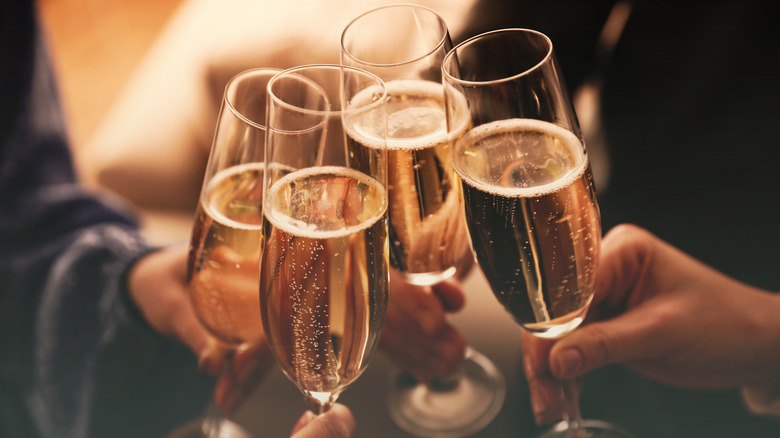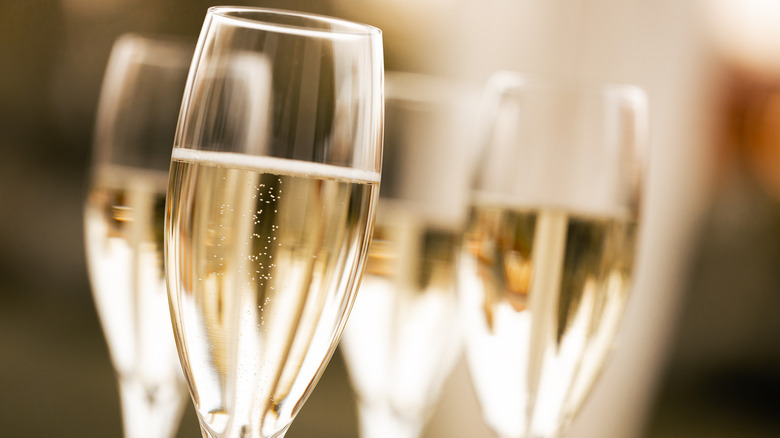The Historical Reason We Pop Champagne Bottles On New Year's Eve
As the clocks chime midnight on December 31 and a brand new year is ushered in, the familiar soundtrack of fireworks, people cheering, and champagne corks popping will echo across the globe. Many of us will instinctively look for a bottle or two of celebratory fizz when buying wine for a holiday party; in fact, it's been estimated that a quarter of all champagne bottles sold in America are bought between Christmas and New Year's, with more than 360 million glasses of champagne and sparkling wine enjoyed in the U.S. each and every New Year's Eve.
But, why do we choose this particular drink to mark one of the biggest dates in the calendar? While drinking champagne has a long and lavish history dating back centuries, it hasn't always been an option for the majority of people. The sparkling beverage was once associated solely with royal courts and European aristocracy since royalty and nobility were the only ones who once could afford it.
Things began to change after the French Revolution and the huge societal changes that period brought about; back then, champagne quickly gained traction as a desirable way to celebrate special occasions. And, over subsequent years, that signature pop of the cork before pouring the fizzy, lively liquid would become synonymous with one of the biggest communal celebrations of all: New Year's Eve.
Things began to change in the 1800s
By 1800, the act of staying up until midnight to ring in the new year had become more popular, a tradition which European settlers had brought to America. People began to frequent taverns, as well as visiting others' houses, for fun-filled midnight drinks, which included punch as well as champagne.
As secular rituals began to replace religious ones following the French Revolution, champagne became more widespread as part of a variety of celebrations. One use was to 'christen' a ship, for example, before its maiden voyage. Soon, champagne was about to see a sudden huge surge in popularity and availability as prices dropped and sales boomed from six million bottles in 1850 to a whopping 28 million by 1900 as producers began to market the drink for special occasions.
By the end of the 19th century, champagne was widespread at New Year's Eve parties. While still associated with luxury, it was more affordable for the middle classes as an occasional treat — and what better way to welcome in a fresh start than with an overflowing glass of aspirational bubbles? Today, champagne is still seen as an occasional celebratory drink by most, with New Year's Eve proving one of the most popular times to indulge. And with a range of cheaper alternatives these days, from cava to prosecco, there's even more reason to pop a cork this New Year's Eve. Cheers to that.


